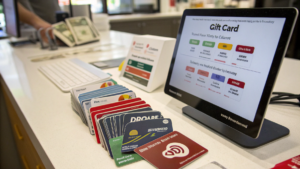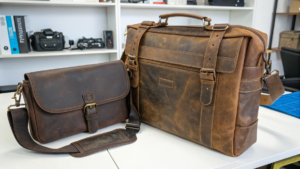Why is Your Travel Power Bank a Key to Seamless Journeys?
Are you preparing for an international trip and thinking about a power bank? It's more than just a charger. It's freedom.
Your travel power bank is a key to seamless journeys because it ensures your essential devices stay charged, allowing you to navigate, communicate, and capture memories without the constant worry of a dead battery, enhancing your overall travel freedom.
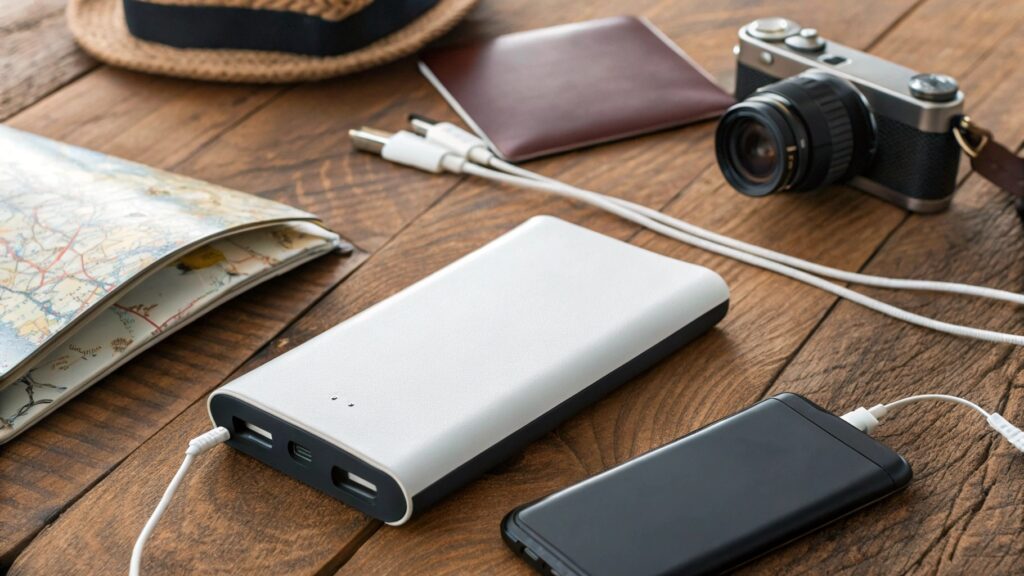
I've learned that the best power bank isn't the biggest one. It's the one that lets you move freely. It's the one that integrates into your travel rhythm.
What is the best size power bank for travel?
Are you wondering what size power bank is best for your travels? It's not about being the biggest. It's about being the most practical.
The best size power bank1 for travel is typically between 10,000 mAh and 20,000 mAh. This range offers a good balance of portability, charging capacity for multiple devices, and compliance with international flight regulations, making it practical for most modern travelers.
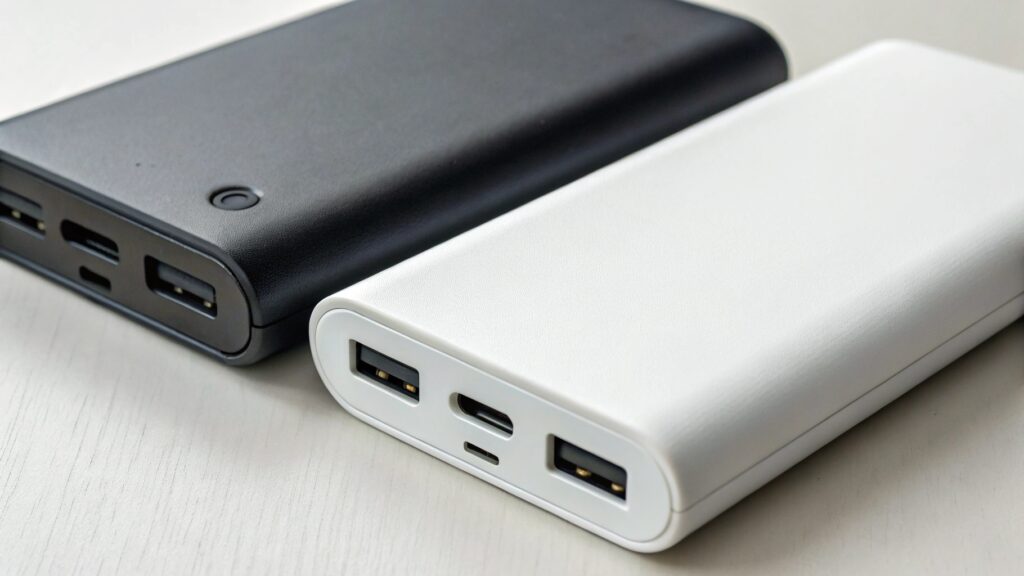
Why is balance crucial for travel power banks?
Balance is crucial for travel power banks. Modern travelers have many devices. They have smartphones, earbuds, tablets, and smartwatches. A good travel power bank2 must balance many things. It needs to be portable. It needs to charge fast. It needs to follow airline rules. It also needs to work with different plug types. Many people forget that airlines limit large power banks. Over 27,000 mAh (100Wh) can be a problem. This makes very large power banks impractical for frequent flyers. I look for a power bank that supports fast charging. It should have multiple outputs. This way, I do not have to choose between charging my phone or my travel buddy's device. It also should have built-in cables to reduce what I might forget. This balance makes it a part of your travel system, not a heavy burden.
| Power Bank Capacity (mAh) | Typical Use Cases | Portability | Airline Compliance (Checked/Carry-on) |
|---|---|---|---|
| 5,000 - 10,000 mAh | 1-2 phone charges, earbuds | Very compact | Carry-on only, generally unrestricted |
| 10,000 - 20,000 mAh | 2-4 phone charges, tablet, multiple devices | Good balance | Carry-on only, generally unrestricted |
| 20,000 - 27,000 mAh | Multiple charges, laptop (limited) | Moderate size | Carry-on only, usually unrestricted |
| > 27,000 mAh (100Wh) | Extended laptop power, off-grid | Large/Heavy | Carry-on only, often requires airline approval |
How does fast charging enhance travel?
Fast charging greatly enhances travel. It is powered by technologies like Power Delivery (PD) and Quick Charge (QC). These let you top up your devices quickly during short layovers. You do not have to wait hours for a full charge. This means less downtime. It means you can use your devices more. Imagine landing at an airport. You have 30 minutes before your next flight. A fast-charging power bank can give your phone enough power for the next leg of your journey. This prevents battery anxiety. It keeps you connected. I find fast charging to be a must-have feature for any travel power bank. It allows for opportunistic charging, ensuring your devices are ready when you need them most, even during tight schedules.
Why are built-in cables convenient?
Built-in or detachable cables are very convenient. They reduce the number of items you need to pack. This means less clutter in your bag. It also means you are less likely to forget a cable in a hotel room. Some power banks have multiple built-in cables for different devices (USB-C, Lightning, Micro-USB). This adds versatility. You do not need to carry separate cables for your phone and your earbuds. I prefer power banks with integrated cables. It simplifies my tech setup. It makes packing and unpacking quicker. This thoughtful design minimizes potential travel hassles, ensuring you always have the right connection readily available without extra searching or forgetting.
What is the largest power bank allowed on international flights?
Are you flying soon and carrying a power bank? There are rules about how big it can be. Knowing these rules is important.
The largest power bank allowed on international flights without special airline approval is typically 100 Watt-hours (Wh)3, which translates to approximately 27,000 mAh for a standard 3.7V battery. Power banks between 100 Wh and 160 Wh usually require airline permission.
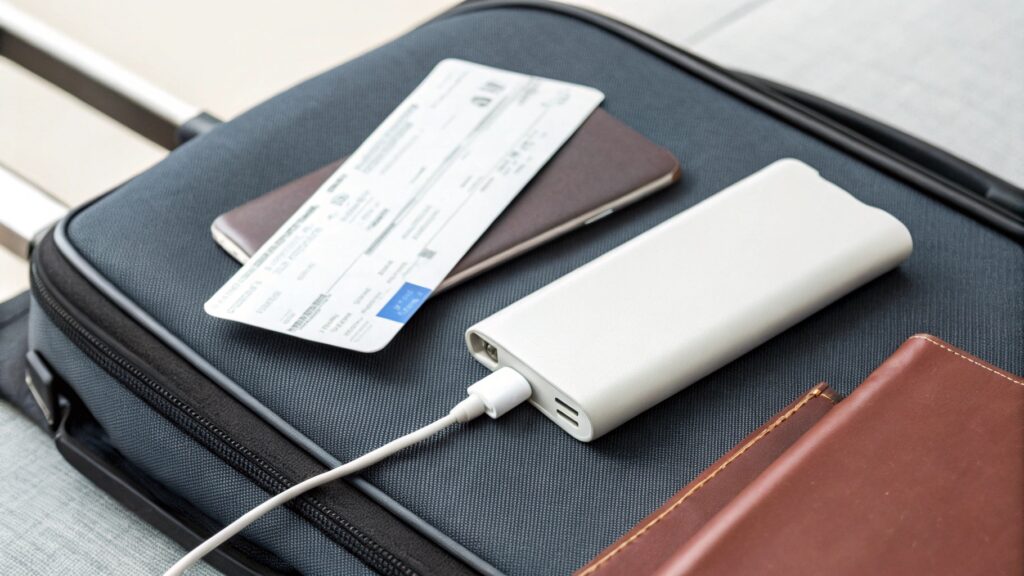
Why is Watt-hours (Wh) the key measurement?
Watt-hours (Wh) is the key measurement for airline regulations. It is not just mAh (milliampere-hours). Airlines use Wh because it accounts for both voltage and current. This gives a more accurate measure of energy. To convert mAh to Wh, you use this formula: (mAh V) / 1000 = Wh. Most power banks use a 3.7V battery. So, 27,000 mAh 3.7V / 1000 = 99.9 Wh. This is just under the 100 Wh limit. Knowing the Wh rating helps you stay compliant. Always check the label on your power bank for its Wh rating. If it's not listed, use the formula to calculate it. This precise measurement is crucial for ensuring compliance with aviation safety regulations, which prioritize the total energy content of portable power devices.
| Wh Range | mAh Equivalent (approx. at 3.7V) | Airline Rule | Typical Devices |
|---|---|---|---|
| < 100 Wh | < 27,000 mAh | Allowed in carry-on, no approval needed | Phones, tablets, earbuds |
| 100-160 Wh | 27,000 - 43,243 mAh | Allowed in carry-on, usually with airline approval | Laptops, multiple devices |
| > 160 Wh | > 43,243 mAh | Not allowed on flights (carry-on or checked) | Very large capacity, specialized |
Why are large power banks restricted?
Large power banks are restricted because of safety reasons. Lithium-ion batteries, which are in power banks, can pose a fire risk if damaged. In an aircraft cabin, a small fire can be managed. In the cargo hold, it is much harder to put out. That is why all power banks must be in carry-on luggage. The larger the battery, the higher the potential risk. Airlines and aviation authorities prioritize passenger safety. These regulations are global. They apply to all international flights. I always respect these rules. They are there for everyone's safety. This proactive measure ensures that any potential thermal events can be immediately addressed by cabin crew, mitigating significant risks to aircraft and passengers.
What happens if my power bank is too big?
If your power bank is too big (over 100 Wh and no approval, or over 160 Wh), it will be confiscated. Airport security will not let it pass. This can cause delays. It can also mean losing your expensive power bank. Some airlines might allow larger power banks (up to 160 Wh) with prior approval. But you must contact them before your flight. Always check your airline's specific rules. The best practice is to stick to power banks under 100 Wh. It makes travel smoother. It avoids any unpleasant surprises at security. I never travel with a power bank that might be questioned. It saves time and stress.
Where should I pack my power bank when flying?
Are you wondering where to put your power bank when flying? There is a very specific rule for this.
When flying, you must always pack your power bank in your carry-on luggage, never in your checked baggage. This is a strict international aviation safety regulation designed to mitigate fire risks associated with lithium-ion batteries in the cargo hold.

Why are power banks only allowed in carry-on?
Power banks are only allowed in carry-on luggage for safety reasons. As I mentioned, lithium-ion batteries can overheat and catch fire. If this happens in the aircraft cabin, flight attendants can quickly see it. They can put out the fire. If a fire starts in the checked baggage in the cargo hold, it is very difficult to detect and put out. This poses a major risk to the plane and everyone on board. This rule is non-negotiable. It is for everyone's safety. I always make sure my power bank is easily accessible in my personal bag. This ensures compliance and smooth passage through airport security. This direct accessibility allows for immediate intervention by the cabin crew in case of an incident, significantly enhancing onboard safety protocols.
| Luggage Type | Power Bank Allowed? | Reason |
|---|---|---|
| Carry-on Baggage | YES | Allows for immediate intervention in case of fire. |
| Checked Baggage | NO | Fire risk in cargo hold is difficult to manage. |
What happens if I put it in checked baggage?
If you put your power bank in checked baggage, it will be detected. Airport security will find it during screening. Your bag will be pulled aside. This will cause delays for you. They will remove the power bank. They might even open your bag to do so. In some cases, your bag might not make it onto your flight. The power bank will be confiscated. You will not get it back. I have seen this happen to other travelers. It is a simple rule to follow. Avoid the hassle. Always pack it in your carry-on. This prevents disruption to your travel plans and ensures you retain your valuable electronic accessories.
What are common misconceptions about packing power banks?
There are common misconceptions about packing power banks. Some people think because their phone is in checked luggage, a power bank is fine too. This is wrong. Phones have smaller, integrated batteries. Power banks are often larger, standalone batteries. Another misconception is that "small" power banks are exempt. All power banks, regardless of size, must be in carry-on. Some travelers also think if it's "dead" it's fine for checked luggage. This is also false. The risk is from the battery chemistry, not its charge state. Always remember the rule: carry-on only, no exceptions. I always educate others about this. It is a simple rule. But it is very important for air travel safety. Understanding these distinctions is crucial for safe and compliant travel, avoiding potential hazards and disruptions at the airport.
Conclusion
Your power bank is vital for travel. Choose the right size. Pack it correctly. It keeps you connected. It helps you travel without friction.
-
Understanding the ideal size for a power bank can enhance your travel experience by ensuring you have enough power without the bulk. ↩
-
Explore the safety regulations surrounding power banks to ensure a smooth travel experience and avoid confiscation at security. ↩
-
Learn about the significance of Watt-hours in ensuring compliance with airline regulations and keeping your devices safe during travel. ↩


